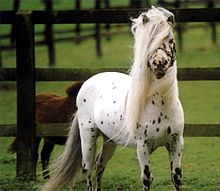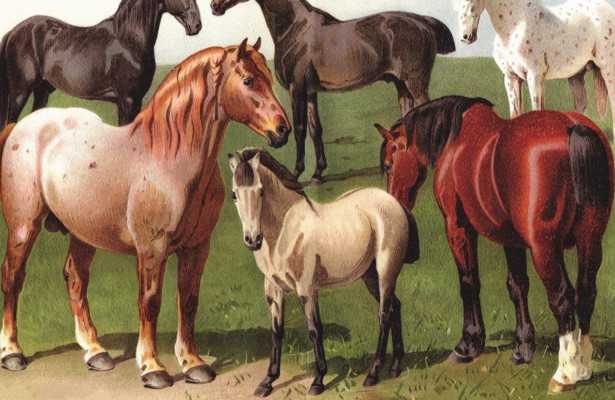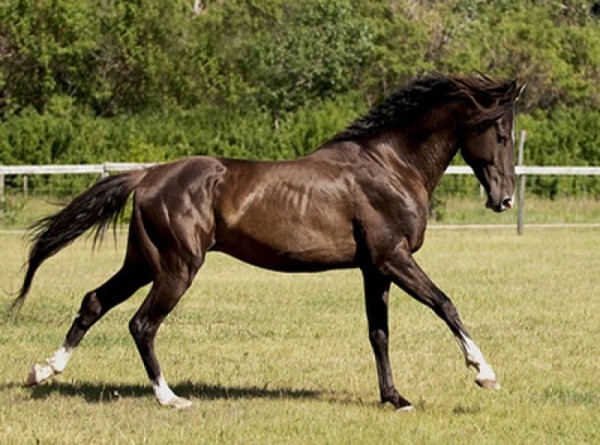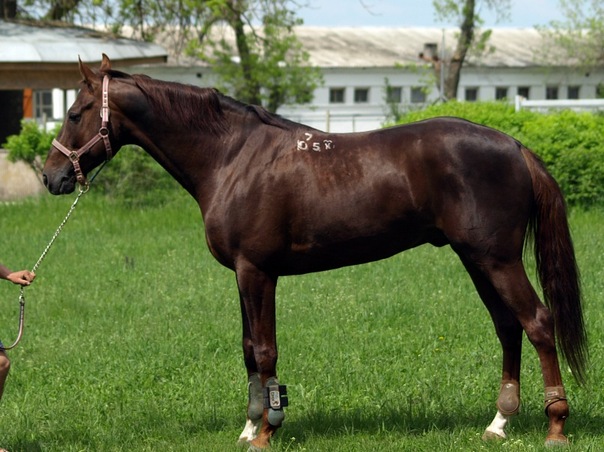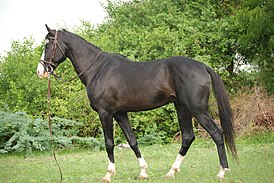OSSETIAN ROCK HORSE (part 3)
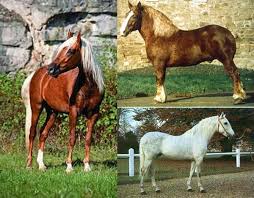 Archaeological material belonging to the Scythian period reflects close contacts between Iranian-speaking nomads and Caucasian tribes. Particularly intense interaction took place in the Central Caucasus. Under the influence of the ancient Iranians, local tribes underwent changes in military affairs. They began to use cavalry in the war, especially in the 7th-6th centuries. BC, during the stay in the open spaces of the North Caucasus Scythians. From time to time, their numerous equestrian squads made successful campaigns from here to the countries of the Near East. During this period, cavalry became the dominant branch of the Caucasian tribes. Together with equestrian battle tactics, Caucasian tribes adopt the horse itself from the Scythians. Part of the Scythians, and in the VI-V centuries. BC. and savromatov, mixed with cobans who lived in the foothills. The presence of nomadic burials in the mountainous regions of the Central Caucasus dating back to the 7th-6th centuries. BC, indicates the penetration of certain groups of Scythians into the mountains. Together with other elements of nomadic culture in the local environment, Scythian-Savromat horses are also widespread. The process of turning a steppe horse into a mountain horse has been going on for many centuries. At the same time, the adaptation changes that occurred with the horse took place under the influence of both natural and artificial selection.
Archaeological material belonging to the Scythian period reflects close contacts between Iranian-speaking nomads and Caucasian tribes. Particularly intense interaction took place in the Central Caucasus. Under the influence of the ancient Iranians, local tribes underwent changes in military affairs. They began to use cavalry in the war, especially in the 7th-6th centuries. BC, during the stay in the open spaces of the North Caucasus Scythians. From time to time, their numerous equestrian squads made successful campaigns from here to the countries of the Near East. During this period, cavalry became the dominant branch of the Caucasian tribes. Together with equestrian battle tactics, Caucasian tribes adopt the horse itself from the Scythians. Part of the Scythians, and in the VI-V centuries. BC. and savromatov, mixed with cobans who lived in the foothills. The presence of nomadic burials in the mountainous regions of the Central Caucasus dating back to the 7th-6th centuries. BC, indicates the penetration of certain groups of Scythians into the mountains. Together with other elements of nomadic culture in the local environment, Scythian-Savromat horses are also widespread. The process of turning a steppe horse into a mountain horse has been going on for many centuries. At the same time, the adaptation changes that occurred with the horse took place under the influence of both natural and artificial selection.
Since the end of the 4th century BC. Sarmatian tribes begin to penetrate into the central regions of the North Caucasus, and from the 2nd century onwards BC. this process has intensified significantly. As in the previous period, the contacts of local tribes (who also had a certain Scythian-Savromatic ethnic component) with nomads were diverse. Archeology data indicate a lively relationship between the Sarmatians and the indigenous population.
The acclimatization of steppe Scythian-Sarmatian horses in the mountainous conditions of the North Caucasus most likely lasted several centuries. During the artificial and natural selection, some of these horses had to adapt to the climatic conditions of the mountain and foothill zones of the Caucasus. This process is interconnected with the seasonal-distant nature of cattle breeding, which has been known in the Caucasus since ancient times. The presence of horses adapted to the local climate certainly contributed to the expansion of cattle breeding, which in turn implied the presence of such a segment as horse breeding.
A significant improvement in Caucasian mountain horses, descending from the Scythian-Sarmatian steppe horse, occurred in Alanian time. According to archeology, dating back to the 5th century AD Alans move to the foothills and mountains of the Central Caucasus. At this time, they become the dominant political and military force in the region. In the process of developing the foothill and mountainous environment of the Caucasus, the Alans mastered the system of cattle breeding. The yailing type of cattle breeding, practiced here since ancient times, during this period was completely in the hands of the Alans and played an important role in their economic life. In Alans, it received a more intense and widespread distribution, compared with the previous period. It is well known that in Alan cattle breeding, as well as their predecessors – Scythian-Sarmatian tribes, a special place was occupied by a horse. The development of cattle breeding was supposed to have an effect on the horse. It was used during cattle driving from the plain to the mountains and back. In addition, horses were also part of the herd itself.
